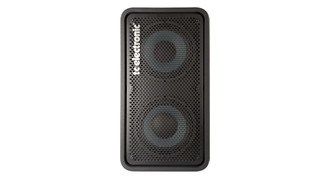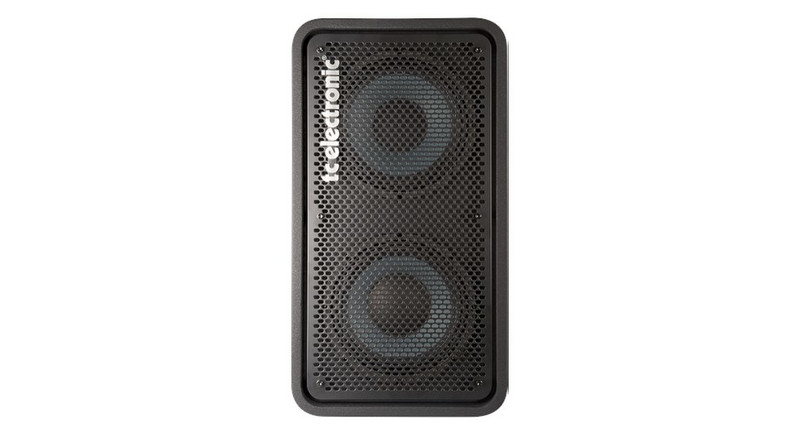目錄的
-
目錄的
- Antiquitäten & Kunst
- Auto & Motorrad: Fahrzeuge
- Baby
- Bücher
- Camping & Outdoor
- Feinschmecker
- Garten & Terrasse
- Haushalt & Wohnen
- Haustierbedarf
- Heimwerken & Garten
- IT和电子
- Kleidung & Accessoires
- Modellbau
- Musik
- PC- & Videospiele
- Sammeln & Seltenes
- Spielzeug
- TV, Video, DVD
- Telekommunikation
- Uhren & Schmuck
- Wellness & Beauty
- fashion & lifestyle
- institutional food services equipment
- medical equipment, accessories & supplies
- 个人护理
- 休闲爱好
- 办公设备,用品和配件
- 商业与工业
- 家居,建筑,装修
- 家用电器
- 摩托车及配件
- 武器和弹药
- 照相机
- 花园和庭院
- 运动,娱乐及休闲
- 食物
- 高保真音響
Filters
Search
TC Electronic RS210 loudspeaker
凡购买和价格 (Advertising *)
顶部
技术特点
顶部
扬声器
| 低音炮 | Y |
|---|---|
| Subwoofer driver diameter (imperial) | 10 " |
| 低音炮 寸法 | 10 " |
| 高频扬声器直径 | 1.2 " |
| 驱动程序数量 | 2 |
| 扬声器数量 | 2 |
| 放大器 | N |
| 高频扬声器 | Y |
| 锥形扬声器 | Titanium |
| Woofer diameter | 254 mm |
| Tweeter diameter | 33 mm |
| Driver diameter | 254 mm |
性能
| 均衡器 | N |
|---|
音频
| 阻抗 | 8 Ω |
|---|
另外
| 连接方式 | Wired |
|---|
Bass Cab, 400 Watt, 2 x 10" Drivers 1" Tweeter, Eminence custom 10", titanium diaphragm, 8 Ohm, Anti-skid
Stack 'Em High!
We do not believe in conventions or rules. Sure, you adhere to the rules to a certain point - but then you break them! That thought is what lies behind our unique vertical stacking concept that frees up space on the stage, takes weight off your back and most importantly, lets you hear every detail of your playing without sacrificing low-end punch.
The RS cabs come in 4 models: 4x10", 2x10", 2x12" or 1x12", and you can mix and match as well as stack them both vertically and horizontally as you see fit.
Fat Tone, Skinny Weight
If you have a crew of roadies to handle your gear, weight is not a concern of course, but if you have to handle your own rig after a long gig, you know that a 130 lbs. 8x10" cab can suddenly transform itself from a source of sound to Mission Impossible...
Enter our RS cabs. They pack some serious power, but that does not translate into serious weight! In fact, you'll find it a breeze to load and unload the van when you're gigging with our range of RS bass cabs.
Dual Drive
No, we're not talking about overdrive here... When we decided to get into making bass cabs, we did it like we do everything we attempt: 100%. Otherwise, what's the point?
So we teamed with the speaker gurus over at Eminence to design a dual-concentric driver that fits a 1" tweeter inside the main driver.
You may not be able to see it, but it's definitely there making those crispy highs that add a touch of magic to your tone.
Vertical Stacking Explained
Vertical Stacking... It may sound like a term that was developed by our sales and marketing departments, but in reality Vertical Stacking was born in our bass development department. The concept emerged from years and years of bass playing. Yep, that's right! The guys developing TC bass gear are actually bass players themselves, and they know what it's like out there in the real world of bass.
The Problem
If you ever play gigs at private parties or small to mid-sized venues, you probably decided to only bring one bass cab - typically one with a 4x10" speaker configuration.
If you place a 4 x10" cab on the floor the sound waves will bounce off the floor. While this is great for getting that fat low-end impact, the downside is that you can't hear the details of your playing. (Well, your knees can, but not your ears.)
One solution is to place the cab on a chair, a rack case or similar. Now, you can hear the mid and high frequencies much better, but the downside is lack of low-end presence. Since you elevated the cab, you lose the early reflections bouncing off the floor.
In other words, no matter what you do, using only one 4 x 10" cab means a compromise of sound quality.
Horizontal Alternative
As long as you use TC cabinets, most of our amps can actually handle 3 cabs simultaneously.
Obviously, it would become a very tall stack if you stacked 3 2x10" or 2x12" cabs vertically, in fact you may not be able to reach the amp...
But don't worry, due to the extra cab, it actually makes sense to stack them in the traditional, horizontal way if you hook up three cabs.
The Solution
The solution to the problem is our unique Vertical Stacking concept. There is nothing wrong with using 4 10" speakers. In most situations, that is more than enough - the problem is that all 4 speakers are fitted inside a square box in a 2x2 configuration.
Our answer is a 4x1 speaker configuration using either two 2x10", 2x10"/2x12" or two 2x12" cabs. Whether you want 10 or 12" speakers or a combination, the point is that you stack the speakers vertically.
The early reflections add punch and low-end to your sound, but at the same time, you can hear every detail thanks to the fact that the top speaker is aligned with your ears.
No More Compromises. Issue Solved!
Classic Stacking
If weight and space is less of a concern, you can always go for the classic configuration of 8x10". Or how about 2x12" in the bottom, 4x10" in the middle and 2x10" on top? Obviously, such solutions will also give you all the benefits of vertical stacking using smaller cabs.
Acoustic Tilt
Just like early reflections are key to the Vertical Stacking concept, you can take advantage of the same phenomenon if you use either an RS212 or RS112 as the lower cabinet and an RS210 as the upper cabinet.
It's perfectly fine to align the front of each cabinet, but if you want to emphasize clarity and definition in a natural way (without adjusting the tone controls of the amp), try pushing the upper RS210 cab back a bit.
Now, you will get eary reflections of the upper cabinet coming your way, and even though it may sound like a minor adjustment, the difference is significant and you can control the amount of early reflections by how far you push back the RS210 cab.
We do not believe in conventions or rules. Sure, you adhere to the rules to a certain point - but then you break them! That thought is what lies behind our unique vertical stacking concept that frees up space on the stage, takes weight off your back and most importantly, lets you hear every detail of your playing without sacrificing low-end punch.
The RS cabs come in 4 models: 4x10", 2x10", 2x12" or 1x12", and you can mix and match as well as stack them both vertically and horizontally as you see fit.
Fat Tone, Skinny Weight
If you have a crew of roadies to handle your gear, weight is not a concern of course, but if you have to handle your own rig after a long gig, you know that a 130 lbs. 8x10" cab can suddenly transform itself from a source of sound to Mission Impossible...
Enter our RS cabs. They pack some serious power, but that does not translate into serious weight! In fact, you'll find it a breeze to load and unload the van when you're gigging with our range of RS bass cabs.
Dual Drive
No, we're not talking about overdrive here... When we decided to get into making bass cabs, we did it like we do everything we attempt: 100%. Otherwise, what's the point?
So we teamed with the speaker gurus over at Eminence to design a dual-concentric driver that fits a 1" tweeter inside the main driver.
You may not be able to see it, but it's definitely there making those crispy highs that add a touch of magic to your tone.
Vertical Stacking Explained
Vertical Stacking... It may sound like a term that was developed by our sales and marketing departments, but in reality Vertical Stacking was born in our bass development department. The concept emerged from years and years of bass playing. Yep, that's right! The guys developing TC bass gear are actually bass players themselves, and they know what it's like out there in the real world of bass.
The Problem
If you ever play gigs at private parties or small to mid-sized venues, you probably decided to only bring one bass cab - typically one with a 4x10" speaker configuration.
If you place a 4 x10" cab on the floor the sound waves will bounce off the floor. While this is great for getting that fat low-end impact, the downside is that you can't hear the details of your playing. (Well, your knees can, but not your ears.)
One solution is to place the cab on a chair, a rack case or similar. Now, you can hear the mid and high frequencies much better, but the downside is lack of low-end presence. Since you elevated the cab, you lose the early reflections bouncing off the floor.
In other words, no matter what you do, using only one 4 x 10" cab means a compromise of sound quality.
Horizontal Alternative
As long as you use TC cabinets, most of our amps can actually handle 3 cabs simultaneously.
Obviously, it would become a very tall stack if you stacked 3 2x10" or 2x12" cabs vertically, in fact you may not be able to reach the amp...
But don't worry, due to the extra cab, it actually makes sense to stack them in the traditional, horizontal way if you hook up three cabs.
The Solution
The solution to the problem is our unique Vertical Stacking concept. There is nothing wrong with using 4 10" speakers. In most situations, that is more than enough - the problem is that all 4 speakers are fitted inside a square box in a 2x2 configuration.
Our answer is a 4x1 speaker configuration using either two 2x10", 2x10"/2x12" or two 2x12" cabs. Whether you want 10 or 12" speakers or a combination, the point is that you stack the speakers vertically.
The early reflections add punch and low-end to your sound, but at the same time, you can hear every detail thanks to the fact that the top speaker is aligned with your ears.
No More Compromises. Issue Solved!
Classic Stacking
If weight and space is less of a concern, you can always go for the classic configuration of 8x10". Or how about 2x12" in the bottom, 4x10" in the middle and 2x10" on top? Obviously, such solutions will also give you all the benefits of vertical stacking using smaller cabs.
Acoustic Tilt
Just like early reflections are key to the Vertical Stacking concept, you can take advantage of the same phenomenon if you use either an RS212 or RS112 as the lower cabinet and an RS210 as the upper cabinet.
It's perfectly fine to align the front of each cabinet, but if you want to emphasize clarity and definition in a natural way (without adjusting the tone controls of the amp), try pushing the upper RS210 cab back a bit.
Now, you will get eary reflections of the upper cabinet coming your way, and even though it may sound like a minor adjustment, the difference is significant and you can control the amount of early reflections by how far you push back the RS210 cab.
-
支付方式
我们接受:













